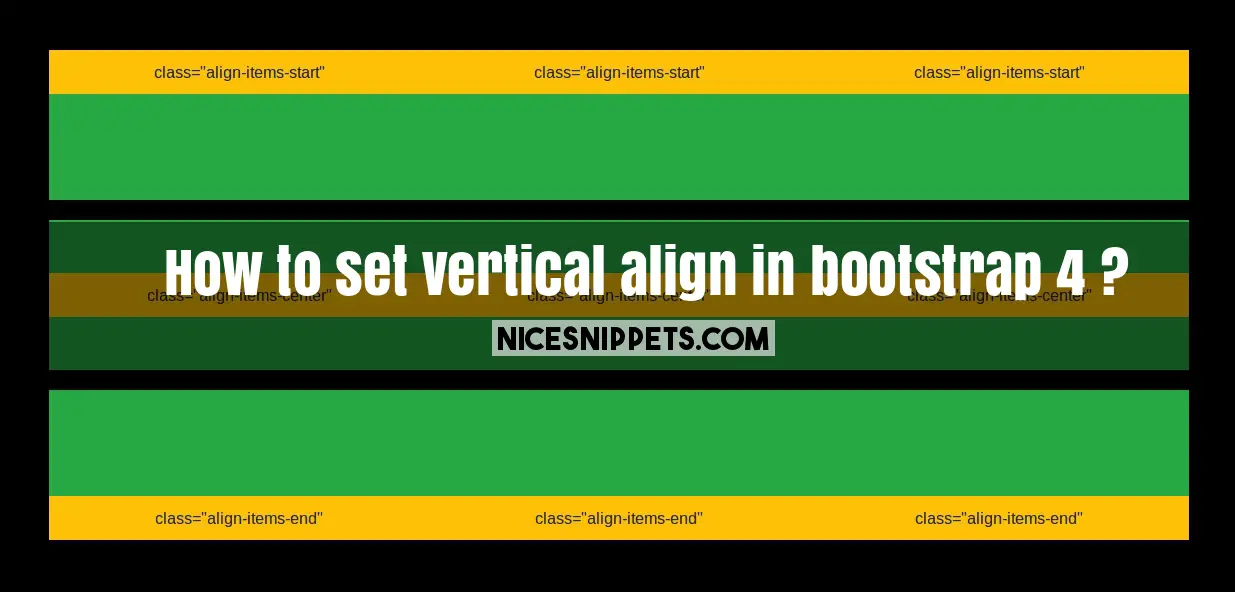

In Figure 3 you can see all these six options applied to table text. The bottom three buttons align text vertically to the top, middle, and bottom of the table cell respectively. These flex items can then be centered horizontally with justify-content and vertically with align-items. The top three buttons align text horizontally to the left, center, and right of the table cell respectively. container into a flex container which automatically turns its child elements into flex items. justiffy-columns-evenly aligns s the columns with an even. justify-content-between aligns the columns on 2 ends. justify-content-around aligns the columns with space before, between and after each column. justify-content-end right align the columns. justify-content-center center aligns the columns. d-flex to the parent element to enable flex mode. justify-content-start left align the columns.
HOW TO VERTICALLY ALIGN TEXT IN BOOTSTRAP COLUMN CODE
Example button Show code Edit in sandbox Only vertically Add.

justify-content-center to align content horizontally. align-items-center to align content vertically and. If the height of the container is known, then setting a line-height of the same value will vertically center the child ntainer d-flex to the parent element to enable flex mode. Example: Adding vertical alignment to inline elements In this example, we are aligning inline elements by using the bootstrap classes. Small 2 - Vertical center row in container of defined height. align-text-bottom - Aligns the text to the bottom of the parent element. Design Elements 1 - Vertical center side-by-side with Flexbox (display-flex-center on. This property controls the height of a line in a run of text and adds an equal amount of space above and below the line-box of inline elements. align-text-top - Aligns the text to the top of the parent element. To vertically center a single line of text or an icon within its container, we can use the line-height property. Use line-height for simple vertical centering In this article we’ll outline three different methods for vertical centering – something that always used to be quite tricky but is now a breeze to accomplish. In the original screencast video for the vertical-align property, we looked at a couple of methods for centering elements vertically. The margin-auto property does not have any effects on inline-level elements.V is for vertically centering text and icons If you need to use margin: auto, there are 2 additional properties you must use as well. However, using margin: auto alone will not work for images.

Flexbox is not even required, but you can use it to align the content vertically. However, this method only works if the image is inside a block-level container such as a : Īnother way to center an image is by using the margin: auto property (for left-margin and right-margin). You can set a Bootstrap background image for a header with JS or CSS Flexbox. The first way to center an image horizontally is using the text-align property. Let's begin with centering an image horizontally by using 3 different CSS properties. Here's a video version if you want to check it out: Centering an Image Horizontally If you're not familiar with those properties, I recommend checking out those posts before reading this article. You can specify a value for align in either the Col component or its parent. I've gone over the CSS Position and Display properties in my previous post. Control the vertical alignment of each column in the row using the align keyword. So in this post, I will be showing some of the most common ways to center an image both vertically and horizontally using different CSS properties.

Handling responsiveness and alignment is particularly tough, especially centering an image in the middle of the page. Many developers struggle while working with images.


 0 kommentar(er)
0 kommentar(er)
